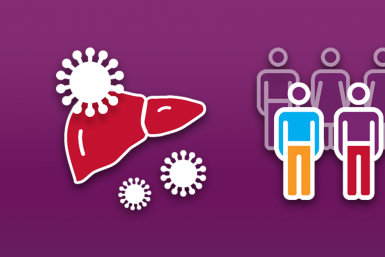- The goal of this resource is to provide public health professionals, researchers, staff in provincial/territorial governments and community organizations with ...
- CATIE NewsA large U.S. study found an increase in neurologic symptoms of syphilis between 2019 and 2022. Neurosyphilis is more common in late-stage syphilis, but also increased in the early stage. Researchers…
- Programming ConnectionThe TakeMeHome (TMH) program mailed free at-home sexually transmitted and blood borne infection (STBBI) testing kits for HIV, hepatitis C, syphilis, chlamydia and gonorrhea to participants who…
- Finding out you have HIV may be a shock. But you do not have to go through this alone: There is help.
- About CATIEThe board and staff of CATIE were heartbroken to learn of the passing of Deborah Norris – activist, educator and Western representative on the CATIE board of directors since 2022.
 This colourful infographic poster shares key messages on hepatitis C in Canada and is based on 2021 estimates from the Public Health Agency of Canada.
This colourful infographic poster shares key messages on hepatitis C in Canada and is based on 2021 estimates from the Public Health Agency of Canada.- CATIE NewsOver 10 years, the share of seized opioids with fentanyl or fentanyl analogues increased from 3% to 68%. Health Canada tested drug seizure samples submitted by law enforcement from 2012 to 2022. The…
- Programming ConnectionThe peer-assisted telemedicine hepatitis C treatment (TeleHCV) program combines peer support with telemedicine to enhance hepatitis C treatment for people who use drugs living in rural and remote…
 This colourful infographic poster illustrates the breakdown of people living with HIV by mode of transmission for each region across Canada.
This colourful infographic poster illustrates the breakdown of people living with HIV by mode of transmission for each region across Canada. We offer instructor-led courses that combine online education with discussion forums and live training facilitated by knowledgeable CATIE educators. CATIE’s HIV treatment course aims to develop in-…
We offer instructor-led courses that combine online education with discussion forums and live training facilitated by knowledgeable CATIE educators. CATIE’s HIV treatment course aims to develop in-…- An assessment of healthcare and harm reduction policies and practices in Canada’s provincial, territorial, and federal prisons.
- Programming ConnectionSBCM-PrEP is a strengths-based case management (SBCM) program designed to expand low-threshold access to pre-exposure prophylaxis (PrEP) at needle and syringe programs (NSPs) for rural people who use…
-
Essentials
-
-
-
-
Statistics
-
Government and community strategies
-
Menu Callout TitleEssentials
Menu Callout BodyBackground information on HIV, hepatitis C and STIs in Canada, including basic information, statistics (epidemiology), provincial and national strategies to address HIV, hepatitis C and STIs, and social determinants of health.
-
-
Prevention
-
How transmission occurs
-
Prevention methods
-
-
Safer sex
-
Harm reduction
-
-
Menu Callout TitlePrevention
Menu Callout BodyInformation on HIV and hepatitis C transmission and prevention, including STIs and safer sex, harm reduction, pregnancy and infant feeding, and microbicides and vaccines.
-
-
Testing & DiagnosisMenu Callout Title
Testing and diagnosis
Menu Callout BodyInformation on diagnostic tests for HIV, hepatitis C and STIs; the delivery of testing and counselling; and resources for people who are newly diagnosed.
-
Treatment & Care
-
HIV treatment, care and support
-
Hepatitis C treatment, care and support
-
Menu Callout TitleTreatment and care
Menu Callout BodyInformation on treatment, care and support for HIV, hepatitis C and STIs, including medications, healthy living, pregnancy and infant feeding, hepatitis C re-infection, and long-term health issues.
-
-
Education, Publications & Websites
-
Education
-
Order a publication
-
Service provider publications
-
Client publications
-
Websites
Menu Callout TitleEducation, publication and websites
Menu Callout BodyCATIE’s online educational courses, webinars, online and print publications, and other websites.
-
-
About CATIE
-
What we do
-
Governance
-
Supporting our work
-
Menu Callout TitleAbout CATIE
Menu Callout BodyCATIE strengthens Canada’s response to HIV and hepatitis C by bridging research and practice. We connect healthcare and community-based service providers with the latest science, and promote good practices for prevention and treatment programs.
-
